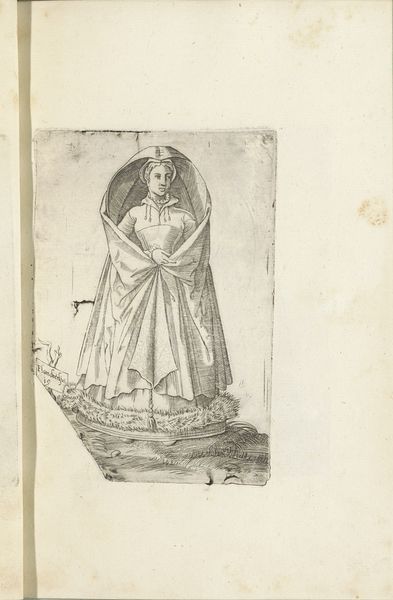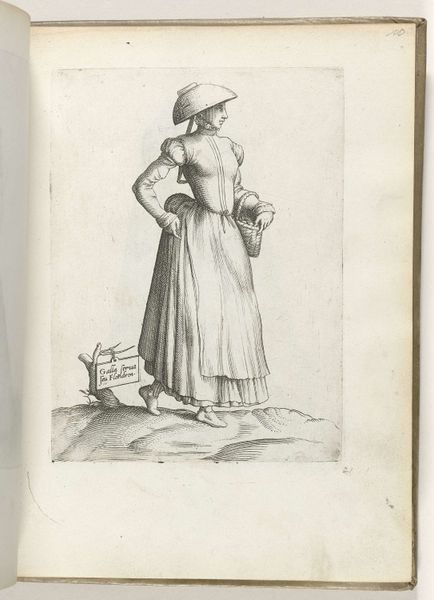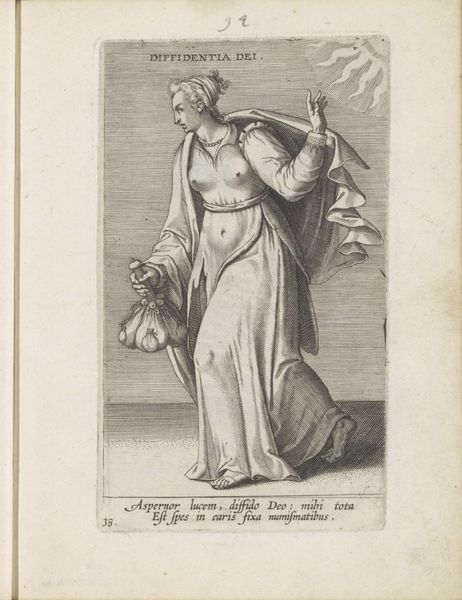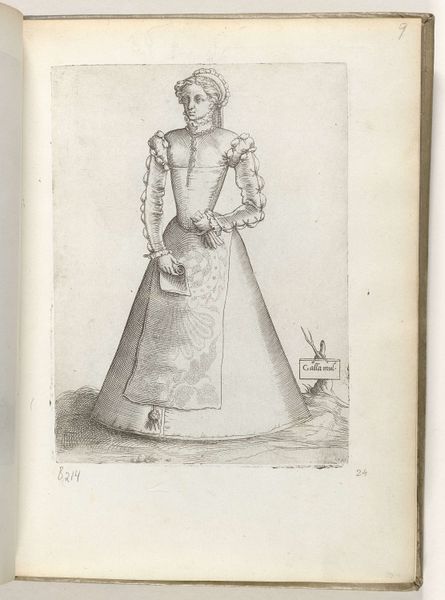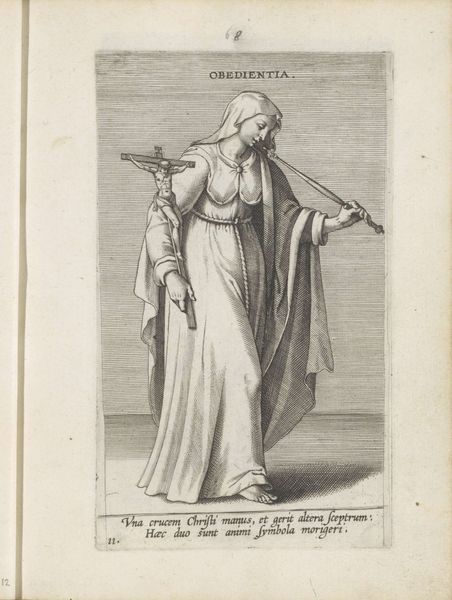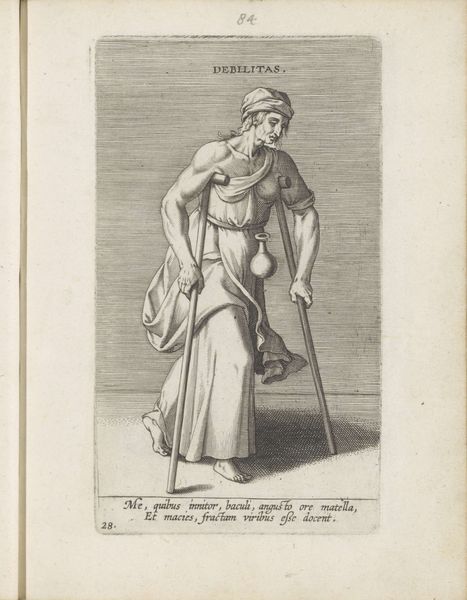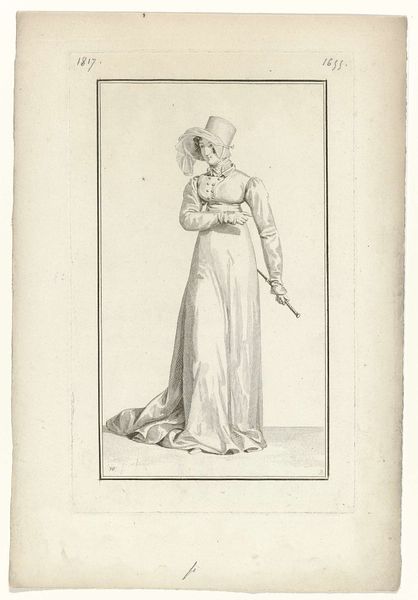
print, etching
#
portrait
# print
#
etching
#
mannerism
#
figuration
#
history-painting
Copyright: Rijks Museum: Open Domain
Curator: Before us is “Flandrensis,” an etching by Enea Vico, crafted before 1558. This print, currently housed in the Rijksmuseum, offers an intriguing example of Mannerist portraiture. What strikes you immediately about this composition? Editor: The overwhelming impression is one of… containment. The figure, presumably a woman, is almost swallowed by the voluminous fabric surrounding her, rendering her strangely static. There's a distinct sense of imposed constraint, wouldn't you say? Curator: Precisely! Vico masterfully employs line and form to create that effect. Notice how the smooth, curving lines of the drapery contrast with the intricate detailing of the gown beneath. It’s this visual tension that lends the piece its dynamism. Editor: It begs the question: is the containment purely sartorial or is it representative of societal expectations? The "Flandrensis" depicted—an allegorical personification of Flanders—is cocooned. Could that also represent the region’s political climate or the constraints placed on women? What narrative are we supposed to infer? Curator: I agree that reading historical context into visual imagery adds depth. Semiotically, one might suggest her carefully clasped hands symbolize constraint of selfhood in favor of propriety and tradition. And given its historical context, a history painting from this era undoubtedly offers commentary beyond the purely representational. Editor: Furthermore, consider how this image was circulated as a print, making it available to a wider audience. Its symbolism resonated politically. Flanders—an area now divided among Belgium, France, and the Netherlands—has seen waves of occupation, domination, and division. Could it symbolize Flanders’ desire to shield and protect its regional autonomy? Curator: That reading seems viable; though I hesitate to bind art too closely to overt political intentions. I’m often inclined to focus on the print’s intrinsic formal relationships: the tonal variations Vico achieves through meticulous cross-hatching, the visual balance struck between the figure and the surrounding space. Editor: True, appreciating the craftsmanship shouldn't negate historical analysis, however. By examining "Flandrensis" through intersecting lenses of social norms and visual language, we unveil an artwork ripe for critical interpretation. Curator: Well said! I appreciate your perspectives; it offers an engaging way to understand Enea Vico’s “Flandrensis” and opens up avenues to look beyond its immediate appearance. Editor: Indeed. By juxtaposing formal analysis with historical awareness, it reveals just how artworks can become active participants in dialogue about gender and power.
Comments
No comments
Be the first to comment and join the conversation on the ultimate creative platform.
